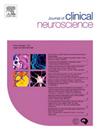脑海绵畸形手术:全国手术量、并发症和费用趋势
IF 1.9
4区 医学
Q3 CLINICAL NEUROLOGY
引用次数: 0
摘要
本文章由计算机程序翻译,如有差异,请以英文原文为准。
Cerebral cavernous Malformation Surgery: National trends in Volume, Complications, and costs
Background and Objectives
Cerebral cavernous malformations (CCMs) are vascular anomalies that can lead to significant neurological complications, such as hemorrhage or lesion progression. This study analyzes trends in CCM resections across the United States, focusing on morbidity, mortality, and associated costs.
Methods
A retrospective analysis was conducted on the National Inpatient Sample who underwent CCM resections from 2016 to 2020. Data were collected from a national database, including patient demographics, outcomes, and costs. Statistical analysis was performed to identify factors associated with in-hospital mortality, complications, length of stay (LOS), and cost.
Results
The patient cohort identified 3,300 patients with a mean age of 42.8 years, with a slight female predominance (53.5 %) and a majority identifying as white (66.5 %). Complications occurred in 8.5 % of cases, with acute bleeding significantly increasing the risk of complications (OR = 2.15, p < 0.001), non-home discharge (OR = 2.52, p < 0.001), and extended LOS (OR = 3.21, p < 0.001). Non-elective admissions were associated with higher rates of complications (17.0 % vs. 3.4 %, p < 0.001) and extended LOS (OR = 2.84, p < 0.001). Independent factors for poor outcomes included higher Charlson Comorbidity Index (CCI) scores (OR = 1.417, p < 0.01) and patient demographics such as age and race, with Black race (OR = 6.84, p = 0.0199) and lower household income (OR = 2.17, p < 0.01) being significant predictors of in-hospital mortality.
Conclusion
This study highlights the significant impact of acute bleeding and non-elective admissions on complications and outcomes following CCM resection. Further research is warranted to analyze socio-economic factors in improving CCM resection outcomes and explore possible pharmacological treatment approaches in high-risk surgical patients.
求助全文
通过发布文献求助,成功后即可免费获取论文全文。
去求助
来源期刊

Journal of Clinical Neuroscience
医学-临床神经学
CiteScore
4.50
自引率
0.00%
发文量
402
审稿时长
40 days
期刊介绍:
This International journal, Journal of Clinical Neuroscience, publishes articles on clinical neurosurgery and neurology and the related neurosciences such as neuro-pathology, neuro-radiology, neuro-ophthalmology and neuro-physiology.
The journal has a broad International perspective, and emphasises the advances occurring in Asia, the Pacific Rim region, Europe and North America. The Journal acts as a focus for publication of major clinical and laboratory research, as well as publishing solicited manuscripts on specific subjects from experts, case reports and other information of interest to clinicians working in the clinical neurosciences.
 求助内容:
求助内容: 应助结果提醒方式:
应助结果提醒方式:


